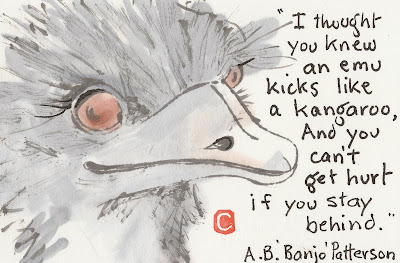Yes. Sydney Harbour has fairies, well not at the bottom exactly but on the shore.
The delightful Fairy penguin, a tiny but obviously hardy creature lives in a small colony almost in the middle of Sydney, capital of New South Wales Australia! These enchanting critters who normally live farther south have braved the perils of suburbia to live cheek by jowl with humans. Unfortunately they are at the mercy of domestic pets, boats and pollution but seem to survive in this busy port.
These little fairies have sometimes to be rescued and treated at the nearby Taronga zoo when mishaps occur and it is a newsworthy occasion when they are released back into the 'wild'. Volunteers guard the penguins at night to protect them from predation by dogs, cats and foxes. On one Island off Victoria Maremma sheep dogs have been used successfully to keep foxes away from the colony
They almost serve a 'canary in the mine' role and indicate the health of the harbour and it's surrounds, something which is at last getting the attention it deserves after 200 odd years of treating it like a drain for the city's pollution.
Anyone wanting to see the Fairy penguins en mass would be advised to go to Phillip Island off Victoria where tourists can watch the nightly march to the sea.
The delightful Fairy penguin, a tiny but obviously hardy creature lives in a small colony almost in the middle of Sydney, capital of New South Wales Australia! These enchanting critters who normally live farther south have braved the perils of suburbia to live cheek by jowl with humans. Unfortunately they are at the mercy of domestic pets, boats and pollution but seem to survive in this busy port.
These little fairies have sometimes to be rescued and treated at the nearby Taronga zoo when mishaps occur and it is a newsworthy occasion when they are released back into the 'wild'. Volunteers guard the penguins at night to protect them from predation by dogs, cats and foxes. On one Island off Victoria Maremma sheep dogs have been used successfully to keep foxes away from the colony
They almost serve a 'canary in the mine' role and indicate the health of the harbour and it's surrounds, something which is at last getting the attention it deserves after 200 odd years of treating it like a drain for the city's pollution.












